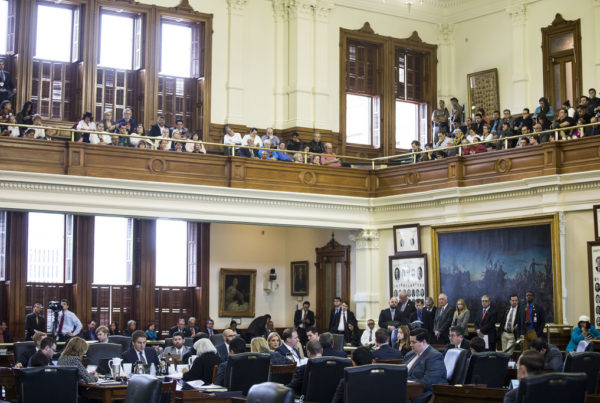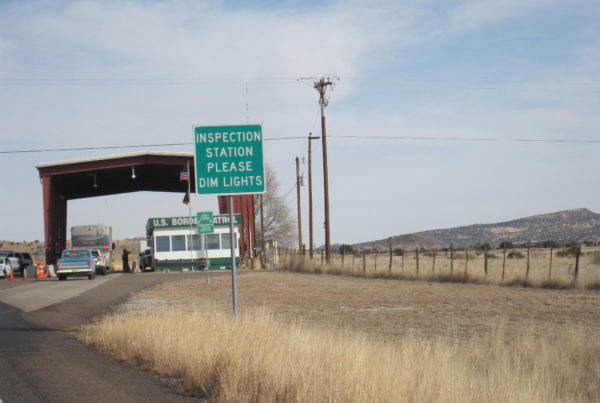From Marfa Public Radio:
The last time reporters were allowed inside the tightly controlled youth detention facility in Tornillo, a couple hundred kids were there. This time, it’s nearly five times that. Mark Weber is our tour guide.
“Thank you all for being here, taking the time to take a look. When I see reporting that doesn’t reflect the program I know – I know it’s time to let you all back in,” Weber says.
Weber’s a spokesman for the U.S. Department of Health and Human Services, the federal agency that oversees the shelter. I follow him and his Incident Commander through orderly rows of large sand-colored tents and trailers outfitted with surveillance and weather-monitoring equipment. On the lunch menu is pork tamales, Spanish rice, beans and street corn. Towards the back of the property, a big group of boys plays soccer on a turf field, supervised by staff in bright shirts and cargo pants.
A smaller version of this tent shelter sprang up in June, just as news broke that immigration authorities were separating thousands of kids from their parents at the U.S.-Mexico border – and almost immediately, protests erupted.
According to HHS, the temporary shelter was built to help relieve some of the migrant shelters across the country that were already filling up, even before the period when children were being separated from their parents. It originally opened with a 30-day contract. But now, HHS says it will be open until at least the end of the year.
Mark Weber stresses the population growth is from an increase in unaccompanied minors.
“This year is the third-largest number of children who have crossed the border unaccompanied and come into our custody,” Weber says.
And many were recently moved to Tornillo from other shelters.
“These are children who’ve crossed the border alone, and had been referred to us by the U.S. Department of Homeland Security for care and custody until we can find a suitable sponsor for them in the United States, while they go through their immigration proceeding,” Weber says.
Weber says this influx is one of the reasons there’s a need for a temporary shelter like Tornillo. But the number of crossings is on par with crossings in each of the last several years. So what’s changed? For one thing, kids are being detained for longer periods of time. Fernando Garcia, executive director of an immigration advocacy group in El Paso, has some theories about why that is.
“I mean, we’ve never seen so much fear in the eyes of our families as we are seeing it now,” Garcia says.
Garcia says new screening policies for sponsors are scaring undocumented people away from coming forward to take in these kids.
“They don’t want to come forward because they don’t have papers, and they are afraid that they might be subjected to arrest and deportation,” Garcia says.
HHS is now fingerprinting and background-checking every individual living in a potential sponsor’s household, and it shares that information with Immigration and Customs Enforcement. An ICE spokesperson recently testified before Congress saying that the agency has arrested dozens of people as a result.
Mark Weber says the screenings are necessary to protect the kids. In 2014, under more lenient policies, HHS released migrant children to human traffickers.
“And as a result of that tragic event, we learned a lesson; we’ve added some additional measures to, again, check in with the households where these kids will be going,” Weber says.
On the Tornillo tour, Weber pointed to the FBI for taking too long to process background checks, saying more than half of the kids housed in Tornillo right now could be released to sponsors soon.
But Carlos Spector, a long-time immigration attorney in El Paso, is skeptical.
“Taking fingerprints is not an act of Congress, nor does it take a rocket scientist to process them. That can be done very quickly,” Spector says.
For him, the delay is a political move, and just another aspect of the Trump administration’s tough immigration policies.
HHS says all of the kids detained at Tornillo right now are 13 to 17 years old. So what happens to the ones who turn 18 at the shelter? Weber says they’re handed over to ICE.















